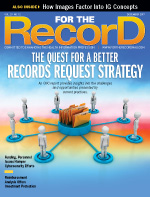December  2017
2017
By the Numbers
For The Record
Vol. 29 No. 12 P. 34
42
A Modis survey asked participants to share what they would be willing to give up if it meant never being hacked again. Alcohol (this percentage) was the leading response, followed by social media (30%) and chocolate (29%). However, in exchange for $1,000, some respondents were willing to leak personal photos (42%), browser history (39%), private messages (31%), or financial information (11%).
68
This percentage of respondents to a Modis survey wouldn't pay anything to recover their data if they were hacked, while 9% would pay less than $100, 19% would pay up to $999, and 5% would pay $1,000 or more. When given the choice of how they would rather spend $1,000, 79% of respondents chose paying off their credit cards over ensuring lifelong cybersecurity, and 74% chose going on a vacation over cybersecurity.
$200 Million
FNFV Group, the investment arm of Fidelity National Financial, paid this amount in cash to acquire HIT company T-System.
35
This percentage of consumers tended to use online portals to discuss health data with their physicians, according to Salesforce's 2017 Connected Patient Report.
$262 Billion
According to the Change Healthcare Healthy Hospital Revenue Cycle Index, out of an estimated $3 trillion in medical claims submitted by hospitals in the United States last year, an estimated 9% of charges, representing this number, were initially denied. For the typical health system, as much as 3.3% of net patient revenue, an average of $4.9 million per hospital, was put at risk due to denials. While an estimated 63% of these claims were recoverable on average, reworking each denial costs providers roughly $118 per claim, for an approximate grand total of $8.6 billion in appeals-related administrative costs.
$179,000
In 2016, 26.9% of medical school students graduated without debt. Of those who graduate with debt, this number is the average amount owed, according to a JAMA study. In comparison, the average medical student graduating with debt in 1986 owed $30,000, which would be $70,000 in 2017 dollars.
82
This percentage of consumers accessed their EHR through their health care provider's patient portal in 2016 compared with generally less than 5% in 2013, according to a survey on consumer access to health information presented by Kim Murphy-Abdouch, MPH, RHIA, FACHE, a clinical associate professor of HIM at Texas State University, at AHIMA's 89th Annual Convention & Exhibit. Additionally, in 2016, only 10% of consumers were charged for copies of their personal health information when they were requested compared with 65% in 2013.



